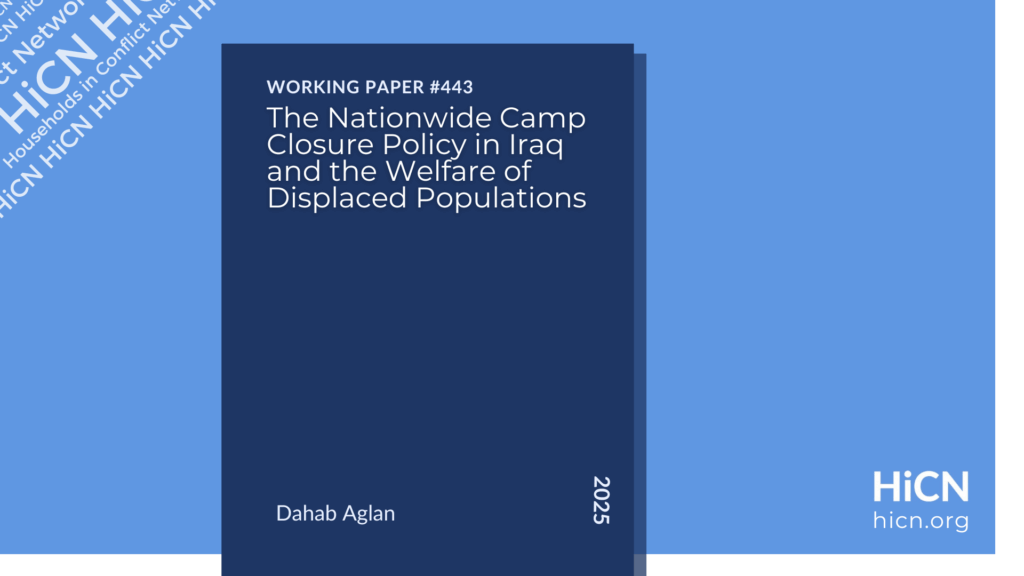
After the end of their conflict with the Islamic State of Iraq and the Levant (ISIL), the Iraqi government initiated a policy to close all camps across Iraq housing individuals affected by conflict and facilitate their return to their areas of origin. At these areas of origin, millions of internally displaced people (IDPs) were also displaced by the ISIL conflict and already living outside of the camps, meaning both groups now co-exist outside of the camps. Using a novel dataset on movements of camp residents from closed camps, I leverage district-level variation in the population shares of inflows from the closed camps to estimate their effects on the welfare of IDP households already living outside the camps. Fearing ISIL-related stigma and targeting, inflows from the camps may not disclose their movements, while others faced barriers to returning to their areas of origin and moved to other districts. To overcome the resulting endogeneity in the inflows from camps, I use an instrumental variables strategy which leverages policy-driven inflows from closed camps while being orthogonal to local district conditions. Contrary to the debate on the camp closures policy, I do not find evidence that overall, inflows from camps affect the welfare of IDP households already living outside of camps. The difference in characteristics between inflows from the camps and IDP households receiving them outside of the camps appears to primarily mitigate the effects of the policy. However, compared to male- headed IDP households outside of camps, female-headed IDP households are more vulnerable to the inflows, highlighting the necessity of tailored policy interventions to address their specific welfare needs, especially their access to healthcare.